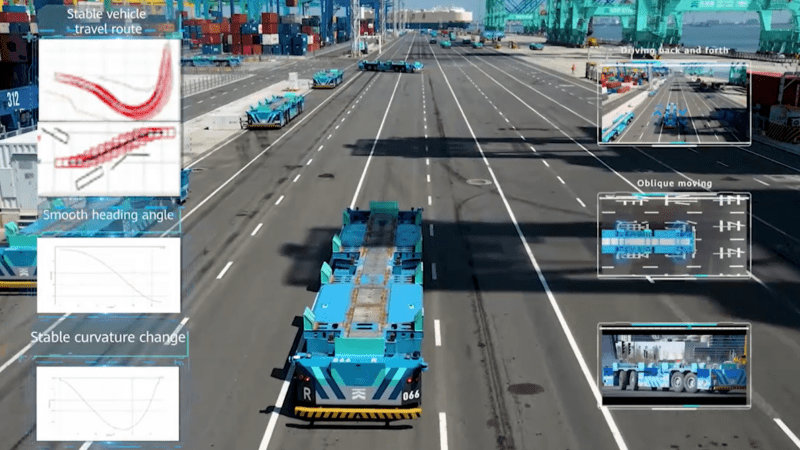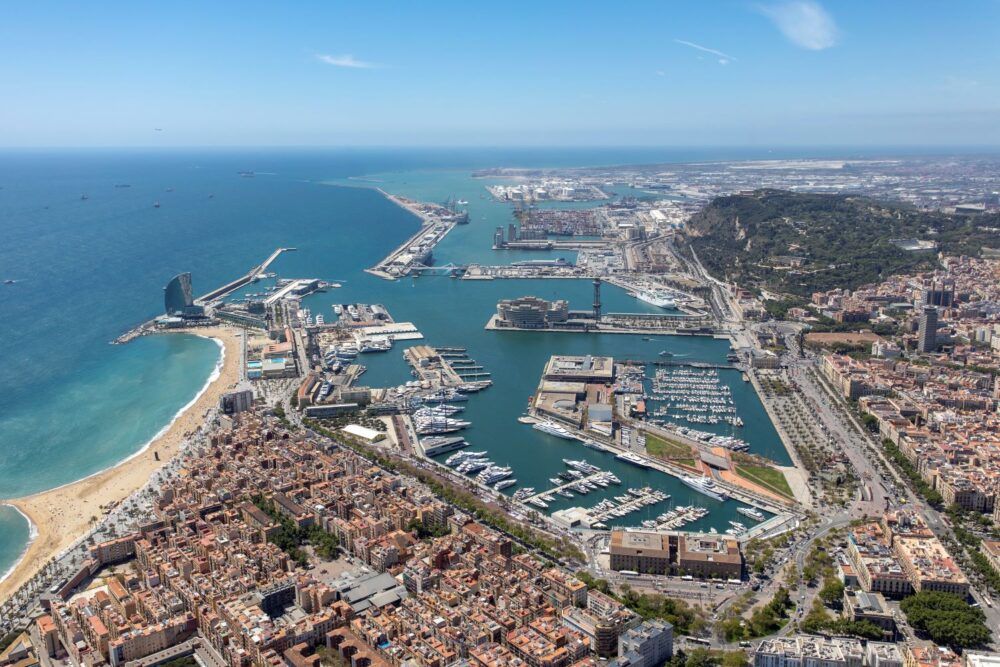 European ports receive hundreds of millions of passengers every year and are the main maritime link with cities (Port de Barcelona).
European ports receive hundreds of millions of passengers every year and are the main maritime link with cities (Port de Barcelona).
The challenge of port-city integration
The mobility and connectivity of cities is closely linked to their ports. They are the calling card for visitors arriving by sea and occupy a space which, open to the city, brings an important added value to the local community. PierNext reviews the cases of Barcelona, Tallinn, Ceuta and the ports of the Adriatic, outstanding projects of the ESPO Awards for social integration.
 European ports receive hundreds of millions of passengers every year and are the main maritime link with cities (Port de Barcelona).
European ports receive hundreds of millions of passengers every year and are the main maritime link with cities (Port de Barcelona).
ESPO Awards for the social integration of ports
The European Sea Ports Organisation rewards the efforts of European ports to improve their relationship with cities through innovative projects. Each year, the theme changes, but the main focus is always on social integration.
To date, some of the awarded themes have been innovative environmental projects (2014), the relationship with schools and universities (2015) or the promotion of port-city relations by incorporating local start-ups and innovative companies into the port ecosystem (2020).
The objective of the 2022 edition was "initiatives and/or strategies to improve maritime passenger links and connectivity within the city or with other cities and bring added value to the local community".
In this, the 14th edition, ESPO has awarded the 'Your port opens up again' initiative of the Port of Barcelona as the one that will more positively impact on its environment. In addition to Barcelona, this year's finalists were the ports of Tallinn, Ceuta and the cooperation project of the Italian and Croatian ports of Ancona, Ravenna, Venice, Trieste, Rijeka, Zadar, Split and Dubrovnik in the Adriatic.
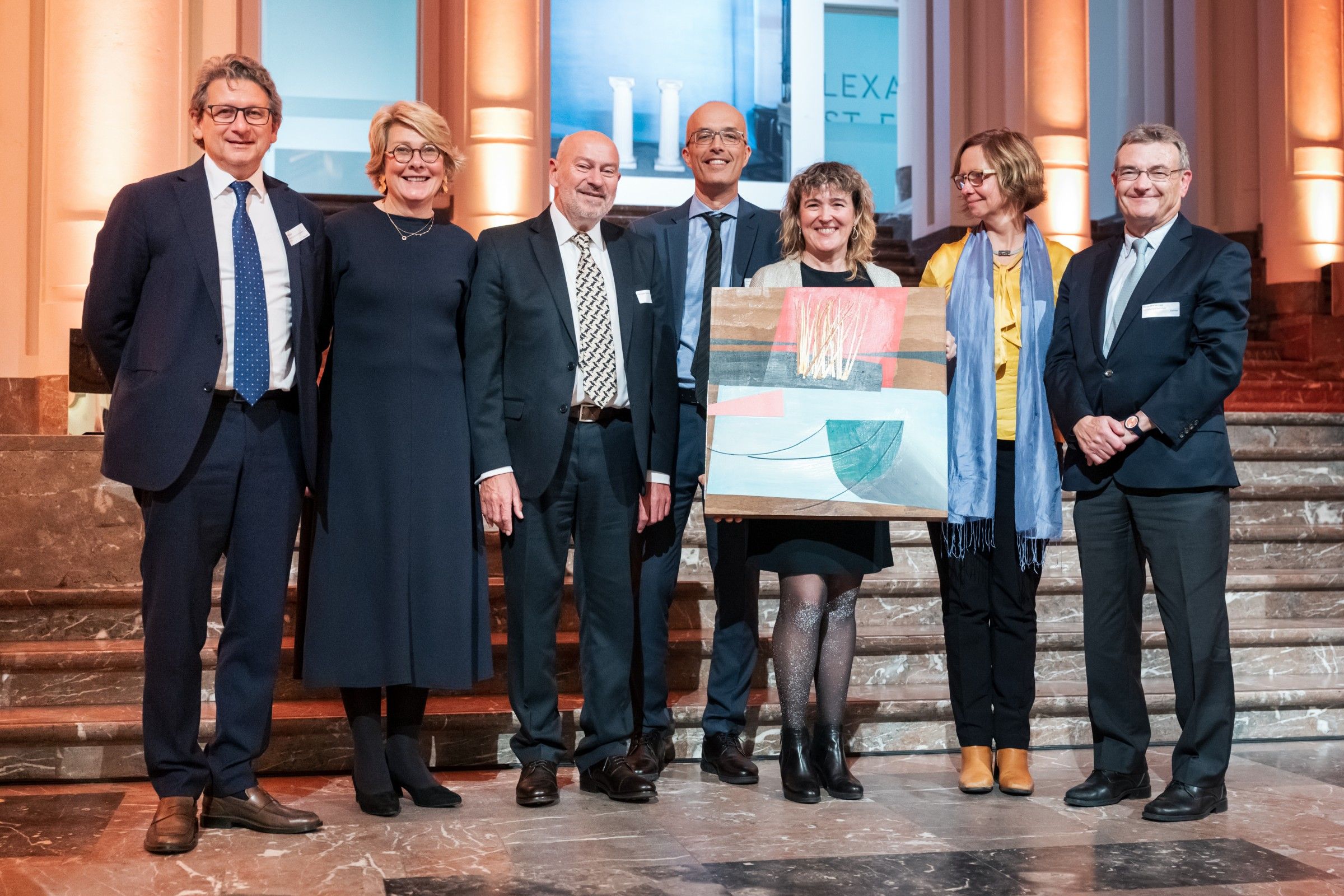
The importance of port-city relations
European ports receive hundreds of millions of passengers every year. As the main maritime link to cities, ports play an important role in opening the doors of cities.
Ports are therefore not an isolated element. Sometimes, frictions with the city and its inhabitants appear, linked to the management of a high number of visitors, the congestion of land traffic or high polluting emissions.
In fact, the ESPO Environmental Report 2022 places 'local community relations' as the sixth priority for European ports in terms of sustainability after climate change, air quality, energy efficiency, noise and water quality.
Collaboration between ports, the cities where they are located and other public-private actors related to the cities must bring value to all parties to improve fluidity and environmental and social sustainability. These indicators are materialised in the projects presented below.
Barcelona: reorganising passenger traffic
‘Your port opens up again’. The project will improve the integration of Barcelona's Port Vell (the area of the port in contact with the city) and the city. The aim is to reorganise passenger traffic by relocating its facilities and to complete a change of location which began with the 1992 Olympic Games.
The Port of Barcelona project will relocate one ferry terminal and two cruise terminals from Port Vell to a passenger-only dock on the Adossat commercial quay. To implement it, two cruise terminals and one ferry terminal will be built on the passenger quay.
The freed areas will be renovated to improve connectivity, port-city integration and reduce the environmental footprint of the port. The transformation of this area at the northern end of its facilities will be completed with a citizens' leisure area, training, innovation and research institutions for the Blue Economy.
Benefits of the award-winning Port of Barcelona project
- Shifting passenger traffic from the immediate area of the city to the commercial pier improves connectivity for the city and visitors.
- The project envisages using autonomous shuttle buses to transfer passengers from the terminals to the city centre.
- Trucks and cars driving through the Port Vell ferry terminal congest city traffic. Diverting traffic will significantly improve traffic flow in the city centre.
- A nautical shuttle service will be available in the area currently occupied by the ferry terminal, connecting different areas of the Port Vell to promote port-city connectivity.
- Citizen space. The spaces left vacant by the terminals will be converted into green and pedestrian areas for the enjoyment of the public.
"The project began in 2018 with the signing of the agreement with the city council and the closure of the Maremagnum cruise terminal. The first terminal will be inaugurated on the Adossat quay in 2024 and in 2026 we expect most of the actions to be completed," explains Maite Roman, head of international organisations at the Port of Barcelona.
Roman stresses that the project is an initiative that, from its beginnings, has involved the participation of other institutions such as Turisme de Barcelona, the cruise companies and Barcelona Airport.
"Dialogue and the exchange of information have been necessary to break down obstacles. It reflects the will of the Port and the city council to work together to improve the quality of life of citizens," she said.
Roman stresses that 'Your port opens up again' will improve environmental sustainability by eliminating ferry emissions in the city, implementing OPS (Onshore Power Supply) at cruise and ferry terminals and increasing the use of electric and autonomous vehicles. These traffics also enhance economic sustainability by generating a greater number of international air connections, more employment and increased safety in passenger traffic.
Finally, thanks to the port spaces it will dedicate to Blue Economy innovation, logistics training institutions and R&D&I activities, social sustainability will increase.
Collaboration between ports and cities should improve fluidity and environmental and social sustainability
Tallinn: Unifying the port with the historic districts
The port of the Estonian capital presented a project that seeks to integrate its waterfront with the local community to create a friendly and technologically intelligent urban environment for residents and visitors.
Amongst other objectives, the Port of Tallinn wants to develop the urban environment to promote the port's historical importance and future values, exemplified by the use of innovative technologies.
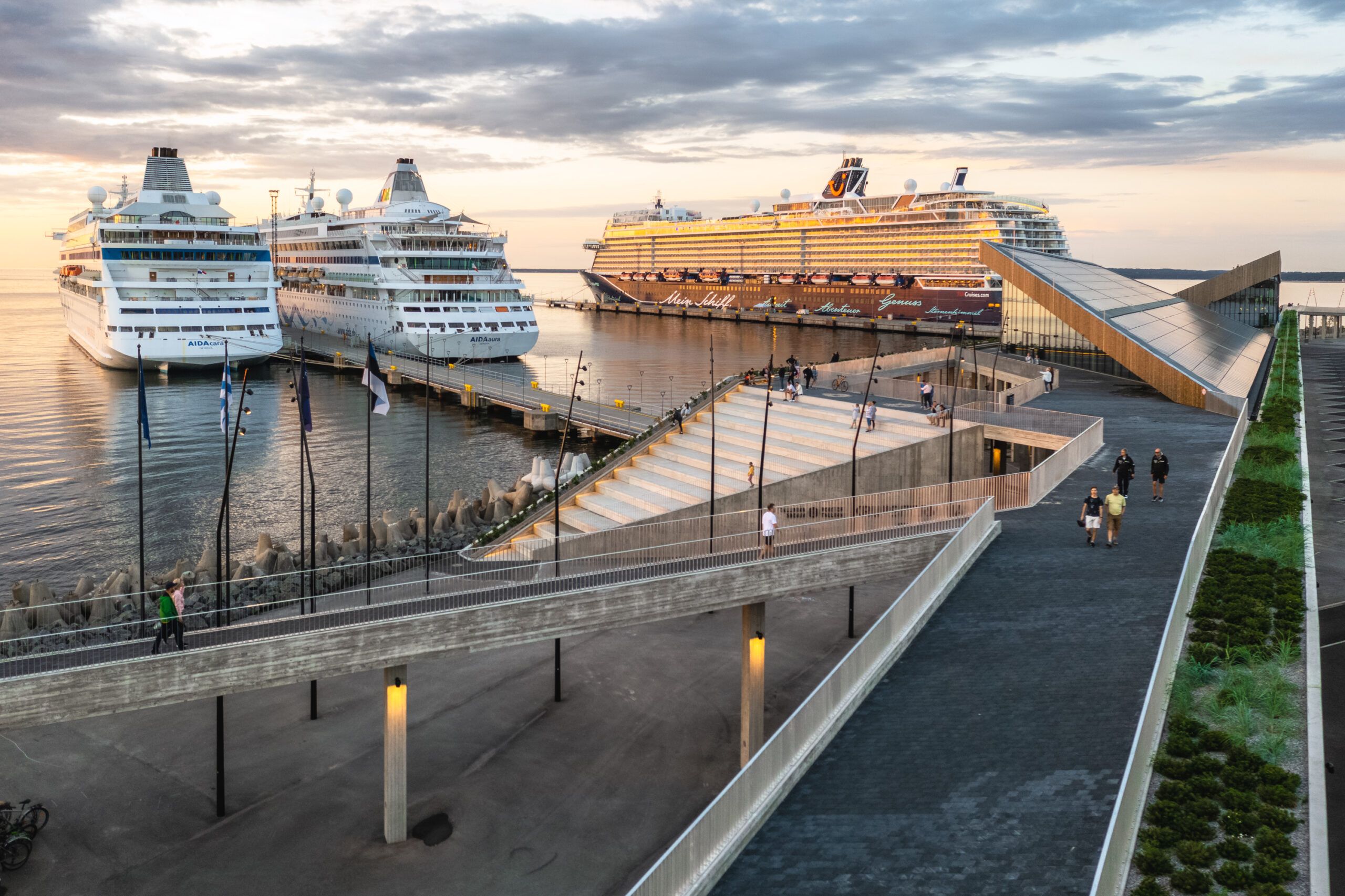
The first step has been the new smart and sustainable cruise terminal opened in 2021, which is used for various events that add value to the local community with less environmental impact.
A promenade on the roof of this new terminal, almost one kilometre long, has opened this area to Tallinn's citizens and visitors. It features a restaurant, a children's playground and an outdoor fitness centre.
Benefits of the project
With this initiative the Port of Tallinn aims to
- To provide the public with better access to the waterfront by opening up the harbour area to recreational, commercial and residential uses. To achieve this objective, the entire area will be redeveloped.
- Improvements include the transformation of car parks into green spaces.
- New and improved opportunities for passengers to move faster from one terminal to another, park their cars more conveniently and board more efficiently.
- The energy needs of the new terminal are covered by 725 solar panels adapted to the Nordic climate. They cover 35% of the energy needs in the cold part of the year, while providing up to 100% of the energy needs in summer.
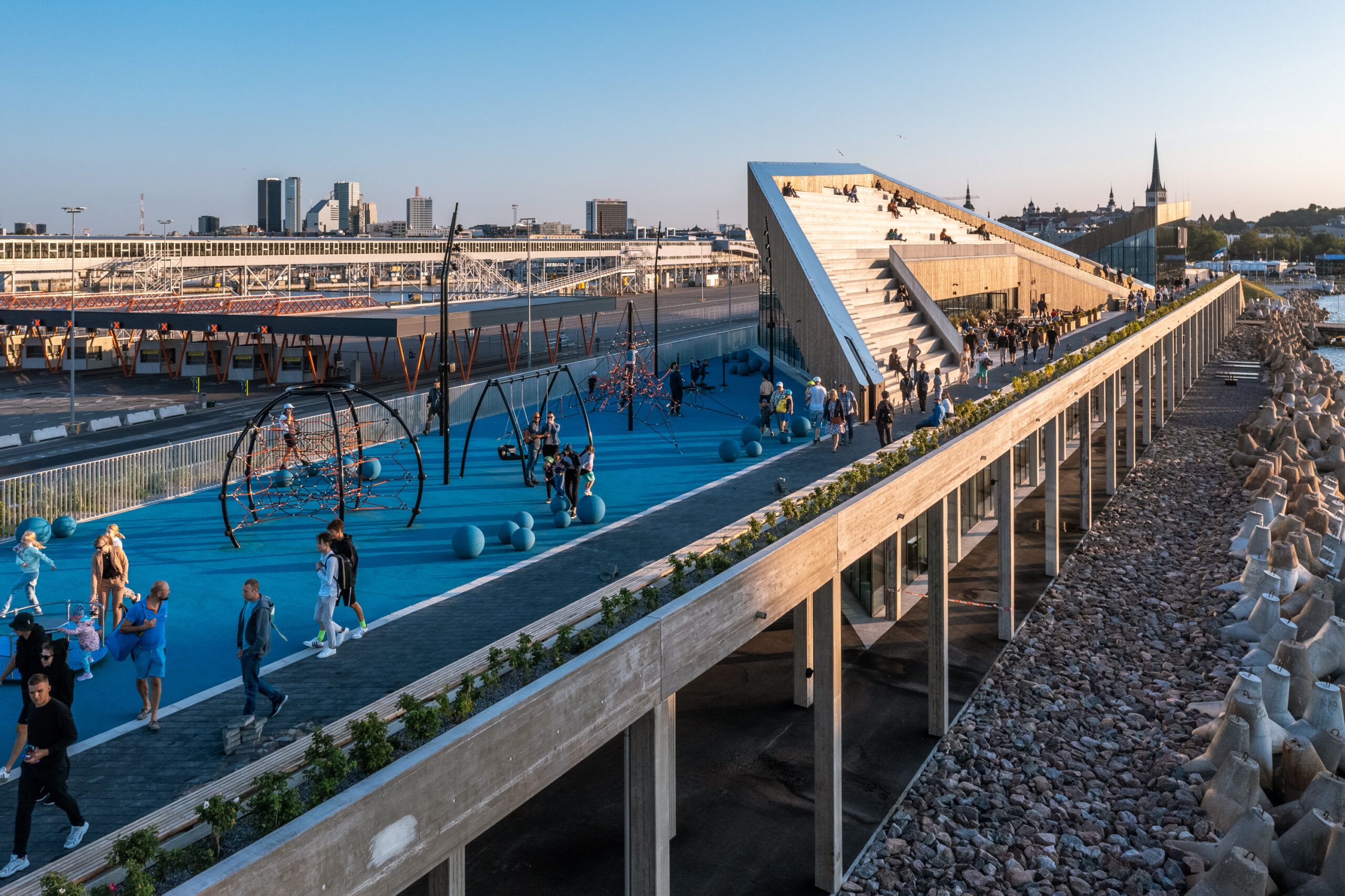
"The masterplan 2030 designed by Zaha Hadid Architects offers a vision for the long-term development of the entire harbour area. The aim for the future is to unify the city centre and the three historic neighbourhoods surrounding the port area, disconnected from each other for decades by a closed, unwelcoming and utilitarian port area," Margus Vihman, commercial director of the Port of Tallinn, explains to PierNext.
The redevelopment of the port area is scheduled for completion in 2040. "While the large-scale redevelopment of the entire port area is being planned, a smaller-scale transformation is being carried out focusing on the port's hotspots," he continues.
Vihman cites as examples of the latter the reconstruction of passenger terminal D, which includes the replacement of a square used by vehicles with a landscaped area, and the construction of a mobile pedestrian walkway connecting the two main passenger terminals.
Ceuta: a new, safer and more efficient terminal
The main objective of the port of Ceuta project is to build a more accessible and safer ferry terminal for passengers. The aim is to improve the functionality of the facilities and to include environmental and social sustainability criteria.
Benefits of the project
- The new terminal will be connected to the existing building through galleries that will be refurbished to improve their energy efficiency.
- The external space in front of the main façade will be transformed into a large pedestrian area.
The project also includes the reorganisation of the spaces surrounding the terminal, such as the car park and the roads.
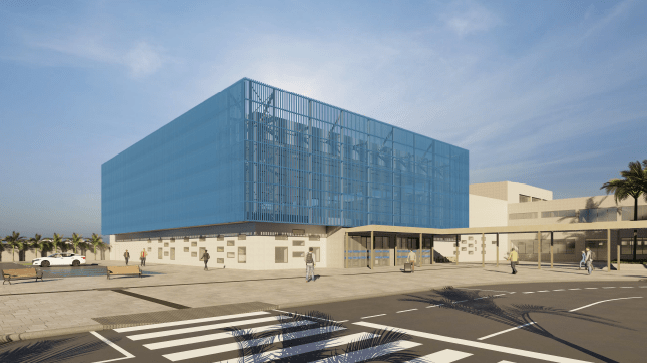
In terms of improving relations with the community, the port and its terminal are the main entry and exit route to and from Ceuta with more than two million passengers a year. The new terminal will allow this traffic to be more efficient and safer and will benefit the city as a whole.
Ports of the Adriatic: A platform that improves connectivity
The ADRIJO Network, financed by the European Interreg Italy-Croatia CBC Programme, created between these eight Adriatic ports and cities, is an innovative multimedia digital platform available in English, Italian and Croatian that enhances the experience of passengers and visitors calling at these ports.
Benefits of the project
- Ports become part of the destination. The ADRIJO platform provides information on the links between these ports and cities, resulting in a higher quality of services.
- The multimedia contents propose different experiences that are not limited to the ports, but expand to the cities, reinforcing the connection between the ports and their communities.
- It contributes to improving the accessibility of port areas through orientation trails and permanent installations that allow tourists and citizens to discover the heritage of ports with innovative digitalised content, in cooperation with local administrations.

The platform allows ports to go beyond their mission as maritime infrastructures and logistics centres to become levers that stimulate the social, cultural and economic development of the related territories, generating new opportunities to create sustainable tourism approaches.
The four projects highlighted by ESPO have in common that they improve the connectivity and fluidity of land and maritime traffic, open up port spaces for the enjoyment of citizens and are committed to innovation and the environment as integrating elements. A further step forward in the port-city relationship.





